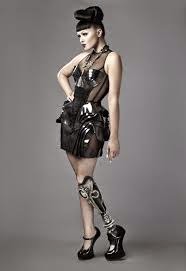This week’s lecture opened up my eyes to a new sector of art – the
medical one. The way we see ourselves and our bodies are constantly changing, and medical technologies play a huge part in this.
“Medicine and Art: Imagining a Future for Life and Love” exhibition at Mori Art
Museum
(http://www.tokyoartbeat.com/tablog/entries.en/wp-content/uploads/2009/12/mori-medicine-and-art-2.jpg)
Human dissection has much to do with contemporary art. Artists use their
knowledge of bone structures and our anatomical bodies and apply them to art. Hundreds
of years ago, Leonardo da Vinci dissected dead human remains and drew them into
well-known artworks (Chiemi). Da Vinci saw that it was important to study human
anatomy despite the fact that it was against the law during that era, and
created an important footnote in medical and art history (Chiemi).
Leonardo da Vinci’s studies of the human body
(http://i.telegraph.co.uk/multimedia/archive/02627/leonardofinal_2627141b.jpg)
Looking into our culture and our society today, we see many artists
doing plastic surgery. “Plastic” means “to mold” (Berliet). Artists thus choose
how they want themselves to be “sculpted.” Orlan is an artist who uses plastic
surgery to define herself. She believes that surgically changing her body is a
powerful work of art (“Artist’s Plastic Surgeries”). She calls what she does “carnal
art” (Orlan).
Orlan, a French artist well known for her work with plastic surgery
(http://losojosdelafilosofia.files.wordpress.com/2008/10/intro_orlan.jpg)
Another example of an artist bringing medical technology and art
together would be Viktoria Modesta, the “World’s First Amputee Pop Artist” (“BORNRISKY”).
As an artist with an artificial leg, she has become more well known for being
an individual who challenges the modern perception of altered beauty. She
merges her artistic side and physical identity together, designing her own
prosthetics (“BORNRISKY”).
Modesta began modelling at the age of 15 and signed a contract with IMG Models in January 2015
(http://www.ladobi.com/wp-content/uploads/2014/12/ViktoriaModesta_0551.jpg)
In her video “Prototype,” Modesta uses uniquely designed prosthetics. Her prosthetic leg is like a piece of jewelry, a piece of art, that she can use to express herself
in her video.
"Prototype" - Viktoria Modesta
(https://www.youtube.com/watch?v=jA8inmHhx8c)
The human machine interface is changing our lives and our society is
slowly adapting to it. The shift towards medical and biotechnology is changing
the relationship we have with our bodies and ourselves.
Works Cited
"Artist's Plastic Surgeries Defy Beauty Standards." NBC
News. 2 Nov. 2004. Web. 23 Apr. 2015.
Berliet, Melanie. "Plastic Surgery Confidential." Vanity
Fair. 1 Feb. 2009. Web. 23 Apr. 2015.
"BORNRISKY." VIKTORIA MODESTA. Web. 23
Apr. 2015.
Chiemi, Nicole. "Leonardo Da Vinci and
Dissection." The Art Crime Archive. Web. 23 Apr. 2015.
<http://www.artcrimearchive.org/article?id=88001>.
Orlan.
“Carnal Art (2001) Documentary.” Online video clip. YouTube. YouTube, 13 Mar. 2011. Web. 23 Apr. 2015.




2 comments:
Your walk through how medical technology, throughout history, has changed how we view our bodies really got me thinking about what the future will be like. I wonder if we as a society will become increasingly accepting of integrating technology with our bodies, like the prosthetics that you mentioned in your post. Maybe one day, it will be normal for people to add artificial limbs to their bodies in addition to the limbs they already have. Perhaps artists will follow in Orlan's footsteps and take advantage of medical advances to change their bodies in ways that we find difficult to imagine now. I can't help but see a connection between prosthetic technology and what we learned last week in the module about robotics. To me, it isn't a far stretch from using prosthetics to replace what was lost to using prosthetics to enhance and integrate our bodies with technology.
Hi Kaylie, I found your post very interesting and did not know about Viktoria Modesta before. I agree with you that medical and biotechnology is shaping our relationship with out bodies. We now have more control over our bodies and so many people are changing their bodies that it is now not abnormal. I think that medical technology has allowed people to use art on themselves like they have never done before. Aside from the practical uses of biotech, medical technology has definitely opened doors for artists to express through physical identity.
Post a Comment